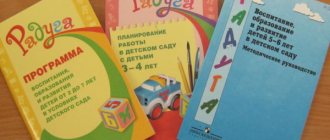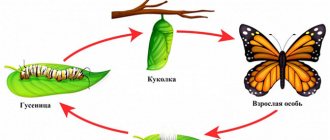Checking readiness
It is important to understand that a 6-year-old child is not required to read and write quickly; this will come with time. But a good memory, vivid imagination, analytical skills and well-developed fine motor skills will help speed up this process.
The development of each child depends on his individual characteristics, but there are certain criteria that it is advisable to focus on in order to gradually fill possible gaps in education. Teachers and psychologists advise drawing up a portrait of a child’s personality by observing his behavior:
- in public places and at home;
- while talking with strangers and relatives;
- in relationships with friends and everyday communication with them.
It is also important to impartially assess the level of development of speech and word proficiency, the ability to express one’s thoughts and pronunciation of sounds.
The organization of any educational activities for children aged 5-6 years is unthinkable without an element of play. Although the purpose of teaching is to encourage the student to perform various tasks, it is better to do this in a creative atmosphere. We must not forget that at this age it is still difficult for a child to maintain attention on a specific task, and lessons should not last long.
It is better to study for 20 minutes a day with short breaks, combining solving puzzles with constructing crafts, graphic drawings and fun physical exercises. This will help develop the following qualities:
- concentration;
- the ability to switch from one type of activity to another;
- do several things at once.
What you need to know about 5 years of age
All babies begin to actively develop from a very early age. They get acquainted with the world around them very quickly and constantly replenish their stock of information, which at first glance seems very simple. Here, parents can find many educational as well as interesting activities for their children that will attract their special attention.
What a five year old should know
Kids of this age will be able to learn to distinguish colors, solve crossword puzzles, train logical thinking, tell time, study animals, plants, and many other useful things. Cognitive activities will help you explore the world in a playful way.
Note! Each game is illustrated with beautiful, bright, memorable pictures, and voice accompaniment will help those kids who do not yet know how to read to quickly master any task. Each completed children's game will develop confidence.
The development of children should not stop for a minute, especially if this is a preschooler (i.e. 1-2 years before entering 1st grade). Educational games for children 5 and 6 years old are more complex tasks. Here children will have to use their thinking to cope with the tasks. The presented tasks will help develop memory, imagination, attention, counting and other qualities important for a preschooler.
Games for a 5-year-old child at home
Directions of development
The curriculum for preschoolers (both boys and girls) must take into account the basic school requirements of the first year of study. There is no need to strive to make a child prodigy out of your child, but you can convey to him the understanding that the more he knows, the more successful he will be at school.
Speech, logic, memory
Developed logical thinking is of primary importance, when a child can identify from a number of objects the one that does not correspond to him, classify the proposed data and compose a reasonable story based on pictures that are sometimes not clearly connected with each other.
Developmental tasks for children aged 5-6 years should bring children’s speech closer to that of adults in terms of word agreement and the ability to make inferences. The child must learn:
- clearly explain where and with whom he lives, name the personal data of the family and his own, including age, first and last names, professions of family members;
- master intonation (emotional, interrogative and exclamation levels), correct pronunciation of sounds;
- quickly change the forms of words, according to number, gender and case, correctly insert prepositions;
- speak confidently on topics that are interesting to him (both in a monologue and in dialogue), argue with an opponent and provide compelling evidence for his views;
- retell long stories, know poems and small passages of prose, riddles and counting rhymes by heart;
- be able to correctly compose sentences, have a large vocabulary and the desire to expand it.
To achieve such results, it is not enough to take your child to educational activities 3 times a week. It is necessary to constantly communicate with the baby, answer questions, play entertaining games with the alphabet and syllable cards. The following activities will be useful and interesting:
- laying out cards with letters and words in logical pictures and reproducing a puzzle with a word from memory;
- colorful copybooks, labyrinths with paths, tracing letters and drawings in a dotted pattern;
- tests with pictures, when you need to insert a missing letter or write down part of a sentence represented by a picture in a word;
- coming up with a story based on images mixed in an illogical order, which also trains logical thinking;
- daily memorization of poetry and reading books.
It is recommended to start all classes with speech therapy exercises for the language, development of the speech apparatus through tongue twisters.
To develop logic, there are many brightly illustrated manuals that suggest dividing different objects into groups, eliminating unnecessary things, or continuing the analogy. It is convenient to print out the pages of the book in several copies and periodically let the child complete the task again. This way you can check how well he has learned it.
Numbers and counting
A child’s brain strives to organize the information it receives, which is why math classes are so exciting for kids. Children aged 5-7 years are quite capable of performing simple arithmetic operations such as addition and subtraction, solving simple problems and puzzles, and also being able to:
- distinguish geometric bodies and figures, divide them into equal components;
- navigate in space according to the principle - straight, left, right, back, forward;
- count from 1 to 10 and back, name numbers selectively;
- master the concepts of more, less, equal;
- Know the arithmetic signs of addition, subtraction, and equality.
To develop these skills, you need to purchase math workbooks for preschoolers, copybooks, counting sticks, coloring books with geometric shapes, and mazes. You can draw cards with numbers yourself or together with your child. All this will be needed for exciting lessons or homework assignments that are given in educational programs for children. With these guides you can:
- learn to write numbers correctly by connecting dots according to a pattern;
- connect the numbers sequentially, resulting in a drawing;
- arrange the correct counting order using cards;
- train your memory by guessing which card is missing;
- determine the number of objects in the picture and correlate them with numbers;
- perform simple counting operations using sticks;
- classify geometric shapes by shape and color;
- determine the directions right - left.
You can teach your child mathematics completely free of charge - count pine cones and pebbles while walking, draw numbers and figures in the sand, and lay them out from blades of grass and twigs. Psychologists assure that such a pastime is more useful than the official development program.
The world around us and etiquette
An adult often forgets that the world around him is something new and unknown for a child. It is important to call by its proper name everything that comes across on a walk or in a store, talking about the properties of objects, plants, animals. It is imperative to discuss the following topics with your preschooler :
- the current time of year, its duration and distinctive features, what changes the change of seasons brings;
- names of days of the week, months;
- hours, minutes, seconds, how to determine what time it is;
- differences between wild animals and domestic ones, migratory birds and wintering birds;
- species of insects and amphibians;
- professions of people and the variety of their activities;
- what fruits and vegetables are there, how they differ.
An assortment of stores is suitable as visual aids, where you can show different types of clothing, shoes, furniture and household appliances, and at home you can consolidate the material by studying in workbooks.
A child’s intelligence is also characterized by successfully mastered everyday skills. Polite behavior, the ability to thank and apologize, and respect for elders are no less important than acquired abilities:
- call on the phone and talk to the interlocutor according to the rules of dialogue;
- sew on a button and seal torn pages of a book;
- behave culturally at the table and in public places;
- fasten buttons on clothes and lace up shoes;
- maintain regular personal hygiene;
- Maintain a clean and tidy appearance.
These skills can only be acquired at home, and not in development classes, so you need to teach them to your child as early as possible.
There are special cardboard devices for learning the principle of lacing and tying bows and knots. You can build busy boards yourself to help develop everyday skills. Fairy tales and stories about politeness and good manners will be deposited in the child’s subconscious with the constant personal example of all family members.
Top 8 Android Apps
SagoMini Trains
The app will take your child on an exciting train ride through one of three locations - a city, a magical forest or a winter fairy tale. Along the way, the driver needs to pick up cargo and passengers. This is a great option for a long journey, since the game does not require an Internet connection.
Animal doctor
The application is a high-quality simulator of the work of a veterinarian. During the game, the child will learn to take care of pets and learn how to help a pet during illness. The app has nice animations and contains a lot of interesting information about health and hygiene, presented in simple language.
Fixies: Masters on a helicopter!
Favorite characters will help your child solve many interesting puzzles that develop logical thinking, memory, and the ability to synthesize and analyze information. The child’s task is to quickly fix various breakdowns throughout the city, and this is where a helicopter is needed.
Learning to Read in English. Preschool education
The application is built on the principles laid down by Maria Montessori. It is based on a plot about animals bewitched by an evil sorceress who need to be saved. The words are voiced by native speakers, thanks to which the child will hear the letter exactly as it sounds in a particular word. The game has 16 levels of varying difficulty. Training goes from simple to complex.
Dinobum
The application includes 20 educational puzzles of varying complexity to develop logic and thinking. Compare dinosaur figures, assemble puzzles, find a suitable shadow - these and other tasks will help your child learn to classify and organize objects according to different criteria.
Socialization
At the age of five, the child takes part in general games with pleasure and is able to take on a role. Children who are leaders themselves organize games with their peers.
Children are familiar with the norms of behavior in society and in nature. They can give a moral assessment of their actions and the actions of other people. Five-year-olds use words denoting emotional states (cheerful, sad, joyful, angry, angry). Children are able to determine what is considered beautiful and what is ugly.
Children respond emotionally to what is happening in books and cartoons; they are able to understand and evaluate the hidden motives of the actions of the characters.
Five-year-olds strive to provide all possible help around the house, which adults cannot refuse, so as not to discourage this desire.
ADVICE FOR PARENTS. Household chores that can be entrusted to a five-year-old owner:
- assemble the bed;
- cleaning the apartment as much as possible (putting your things and toys in their places);
- payment for small purchases;
- pet care (feeding and cleaning);
- assistance in setting the table;
- assistance in putting clean linen into the closet;
- watering house plants;
- the ability to prepare a simple breakfast from cereal or cottage cheese.
Motor skills
5 years is the time when children's motor skills develop the most. Pay attention to the following stages of physical development of your 5-year-old child:
- deftly runs, jumps, climbs, kicks a ball, swings on a swing, because... by this age, coordination and balance will improve;
- can eat independently and at the same time carefully;
- can stand on one leg for about 10 seconds;
- walks forward and backward easily;
- rides a tricycle well.
5 years is the ideal age to start participating in sports clubs.
Fine motor skills
Children learn and experience the world through play. If there are no problems with fine motor skills, a 5-year-old child should be able to:
- build large towers from blocks/cubes;
- hold a pen/pencil well;
- be able to draw basic geometric shapes;
- deftly use a spoon and fork;
- dress/undress, use the toilet, brush your teeth without assistance;
- draw a person.
Advice. At 5 years old, a child is constantly improving his skills. To strengthen them, gradually make the task more difficult for him. For example, as your ability to use utensils improves, begin teaching your child good manners while eating.
Daily regime
Children 5 years old are recommended to take a 2-hour nap during the day. Developmental classes should be given 1.5 hours (3 lessons of 25 minutes each with breaks).
| 8:00-8:15 | awakening, hygiene procedures |
| 8:15-8:45 | morning work-out |
| 8:45-9:15 | breakfast |
| 9:15-10:30 | developmental activities |
| 10:30-12:00 | walk |
| 12:00-12:30 | preparing for lunch |
| 12:30-13:00 | dinner |
| 13:00-15:00 | dream |
| 15:00-15:30 | getting up, dressing, hygiene procedures |
| 15:30-16:00 | games, communication with adults |
| 16:00-16:30 | afternoon tea |
| 16:30-18:30 | walk |
| 18:30-19:00 | games, communication with adults, helping mom as much as possible, watching cartoons |
| 19:00-19:30 | dinner |
| 19:30-20:30 | communication with adults, reading books, games |
| 20:30-21:30 | water procedures, preparation for bed |
| 21:30-8:00 | night sleep |
Nutrition
The diet for five-year-olds is four meals a day. Smoked foods, fatty, spicy and fried foods, and natural coffee are prohibited.
Sample menu for 3 days
Monday
Breakfast: oatmeal porridge with milk, tea, wheat bread with butter and cheese.
Lunch : fresh cucumber salad, pea soup, boiled chicken, mashed potatoes, cranberry jelly, rye bread.
Afternoon snack : cottage cheese casserole with jam, milk.
Dinner : boiled fish with rice; tea, bread, fruit.
Tuesday
Breakfast : omelet, tea, bread with butter, cheese.
Lunch : carrot salad, borscht, fish cutlet with boiled potatoes, fruit drink, bread.
Afternoon snack : pie with jam, milk.
Dinner : stuffed zucchini, tea, bread with butter.
Wednesday
Breakfast : semolina porridge, cocoa, bread with butter, cheese.
Lunch : vegetable soup, meatballs with rice and green peas, compote, bread.
Afternoon snack : cheesecake, milk.
Dinner : potato zrazy with gravy, tea, bread, fruit.
Psychology of a five-year-old or how to raise a happy preschooler
At 5 years old, children understand much more than we think. Another thing is how the child reacts: discusses what he saw with his parents or draws his own conclusions. It is important to have a trusting relationship with your child.
The child's psyche cannot tolerate physical and harsh punishment. Insults will cause just as much harm. At 5 years old, a child is able to listen to an adult and analyze his mistake with him.
During this period, it is very important not to give long lectures to children and try to prohibit as little as possible. Offer an alternative. For example, you can’t hit a ball against walls at home, but you can hit it on the street. Or: you can’t draw on wallpaper, but you can on a sheet of paper.
Be sure to spend time with your child every day . Even if it’s just 15 minutes after work in the evening, it’s just your time without gadgets and the rest of your household.
Musical creativity
Music evokes an emotional response in every child. The favorite classical works of five-year-olds to listen to are plays from the “Children's Album” and the album “Seasons” by P.I. Tchaikovsky, folk songs.
Children happily sing accessible songs, dance to musical accompaniment, can combine dance movements with singing, and are able to convey the character of musical sound with their voice and movement. They are familiar with the concepts: “loud – quiet”, “fast – slow”, “sad – happy”.
Five-year-olds play children's musical instruments - rattles, xylophones, metallophones, drums. You can introduce your child to the concept of “orchestra” and its sound. A vivid illustration of the conversation about the orchestra will be the work “Peter and the Wolf” by S. Prokofiev.




